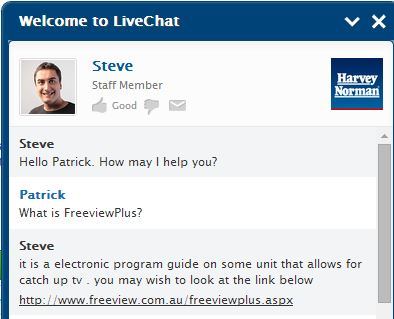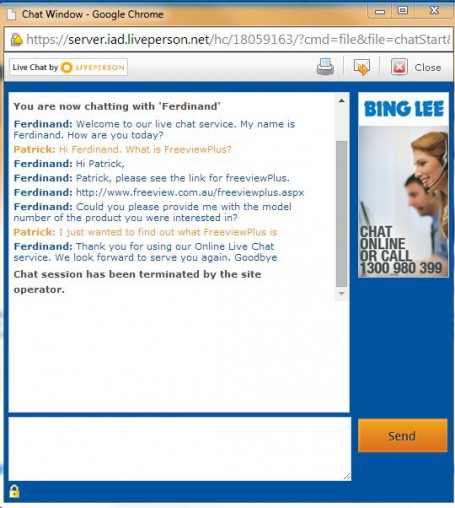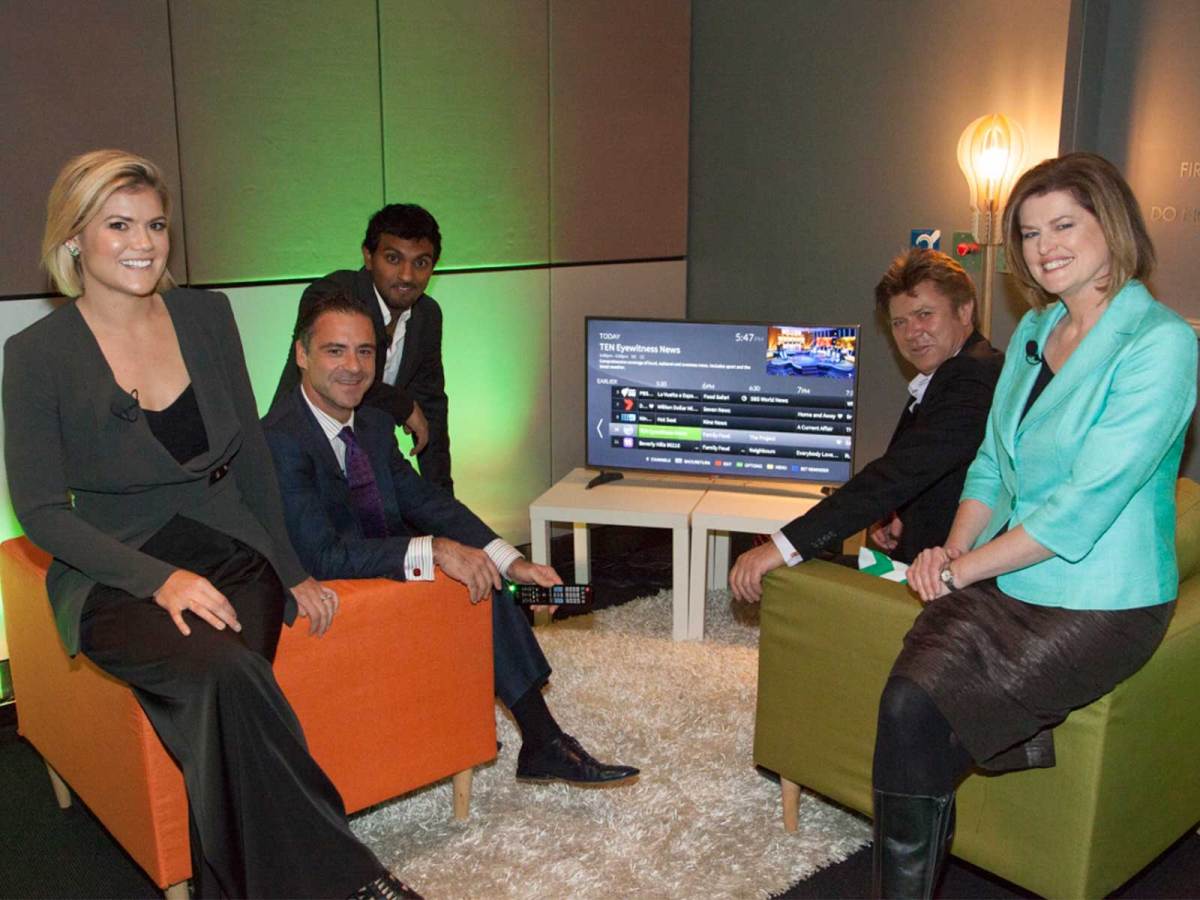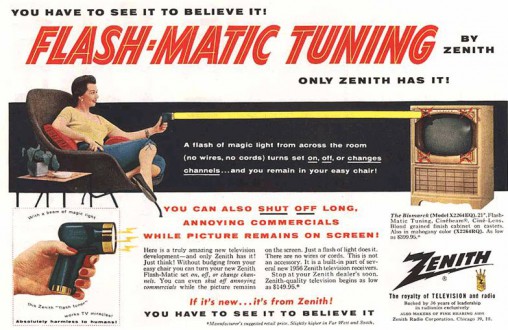
The Zenith Flash-Matic was invented by American Eugene Polley in 1955. Shaped like a handgun, the Flash-Matic aimed a beam of light at the four receptors on the TV, giving it the power to turn the TV on, change the channel and mute the sound. “Just a flash of light does it,” read the marketing copy. “There are no wires or cords.”
One of the downsides of the Flash-Matic, according to Freeview GM Liz Ross, was that, “if you turned any other light on or off in the room, the channel also changed”. Still, this was the 1950s and, according to the marketing spiel, “you have to see it to believe it”.
It was interesting that Ross chose to share the story of Zenith’s achievement in remote control technology because Freeview also is a generator of scepticism; the industry is definitely waiting to see what Freeview has to offer before believing it.
As explained at the launch in Sydney last night, Freeview’s new venture, FreeviewPlus, involves the integration of broadband technologies into broadcast televisions, using a format called HbbTV. All five free-to-air networks are on board, including their multichannels, meaning viewers can access catch-up TV across all the free channels within the one ecosystem.
Ross is calling Australia’s launch a “world first” because, she claims, none of the previous 12 regions to roll-out HbbTV have delivered an integrated platform. Freeview has wrangled all five catch-up service (iView, SBS On Demand, Tenplay, PLUS7 and Nine’s JumpIn) onto the one interface. All a user needs to do is press the Red and Green buttons on their remote control to access these catch-up services.
“In the development of FreeviewPlus, we have the benefit of learning from Europe, which was an extremely helpful part of the process,” Ross said. “Most importantly, the success of Freeview has provided the Australian free-to-air industry with the opportunity to capitalise on our free-to-air platform and provide the industry and viewers with a broadcaster-backed brand and the simplest technology message for consumers: catch-up TV on the TV with FreeviewPlus.”
In addition to catch-up TV, viewers receive access to what Freeview is calling, “The most advanced, user-friendly” electronic programming guide. There are also recommendations of the best programs from the past, present and future; a favourites function to keep track of beloved shows in this desultory era of capricious programmers and the ability to search for titles across all networks for the next seven days.
FreeviewPlus compatible hard disk drives will also have the ability to record programs via the FreeviewPlus interface. And this brings us to the biggest stumbling block for FreeviewPlus: the lack of access points.
FreeviewPlus is different from the original Freeview in many ways. Firstly, this new version actually does something, rather than simply exists. Secondly, when Freeview launched at the George Street Dick Smith store in April 2009, they were joined by five manufacturing partners. A further four were reported to have compatible hardware at the time of launch, covering TVs, set top boxes and PVRs.
When it came time for Liz Ross to speak about FreeviewPlus manufacturing partners, there were only two brands to thank.
“I’d like to acknowledge the hard work undertaken by manufacturers across the board in their integration of HbbTV into their receivers,” she said. “I’d also like emphasise that we have had overwhelming enthusiasm and commitment from the manufacturers and particular thanks and congratulations tonight go to Sony and LG for being first two manufacturers to complete their certifications and become our partners on launch day today.”
It may be that manufacturers have expressed enthusiasm for FreeviewPlus and its attractive feature propositions but there are also elements of dissatisfaction. Unlike in Europe, which has implemented HbbTV version 1.3, FreeviewPlus is version 1.5. For some manufacturers, Australia isn’t considered enough of a priority for the more advanced technology to be included, which is delaying several TV brands from receiving the necessary approvals.
For the PVR manufacturers, the issue is quite vexing. These companies are in the habit of releasing the most up-to-date technology to best serve their customers so it has become a point of contention that FreeviewPlus is asking the leading PVR brands to slow down their fast forwarding functionality. One manufacturer is proud to market a 64x fast forward speed but FreeviewPlus insists that the maximum be 30x.
“We are currently ready but to get accredited you need to meet feature standards that are beneath current technology,” said the marketing boss of one major PVR brand.
When this point was put to Ross she conceded that it has become a sticking point and said she planned on “escalating” the issue, presumably to her network TV overlords: Freeview is an industry body formed to best represent the interests of the free-to-air broadcasters.
Until these hurdles are resolved and more manufacturers are on board, customers wishing to use FreeviewPlus will have 30 TV models from Sony and LG to choose from. Regardless of whether these TVs are already in the home or purchased in the future, they will require a firmware upgrade and a factory reset to unlock the FreeviewPlus feature set. It is unclear exactly when or if a piece of hardware will be released with FreeviewPlus as a native feature. This is mostly a function of FreeviewPlus actually having features: the previous iteration really was just a logo on a box; a marketing of sound and fury signifying nothing.
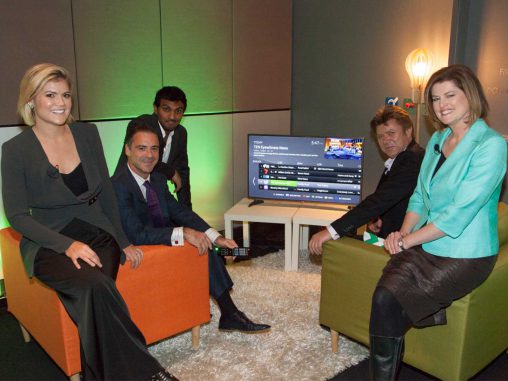
One constant between Freeview and FreeviewPlus is the level of marketing activity. Free-to-air viewers will again be saturated with TV commercials. “To support the arrival of FreeviewPlus, Freeview is also undertaking a large-scale marketing push, which includes the biggest TV campaign since Freeview was launched almost six years ago,” Freeview said.
This will inevitably lead to customers visiting retailers to ask what it’s all about. In her speech last night to the who’s who of Australian TV — even Richard Wilkins was there — Ross mentioned the vital role retailers play in this process:
“It’s also important that I acknowledge the journey that we’ve been on with retailers,” she said. “It does take a bit to get retailers excited about a new product promise but as retailers became more familiar with HbbTV and the fact that there would be a broadcaster-backed brand, their enthusiasm and their engagement increased significantly.”
Ross said retailers were particularly impressed with FreeviewPlus’s key selling proposition: catch-up TV on the TV. She thanked Harvey Norman, JB Hi-Fi, The Good Guys, Bing Lee, Myer and Dick Smith for their support.
On the Harvey Norman website is a feature called LiveChat that allows customers to message directly with a consultant described as a “Staff Member”. ‘Steve’ from Harvey Norman said FreeviewPlus was an “electronic program guide on some units that allows for catch-up TV” and then included a link to the FreeviewPlus website. This was somewhat more helpful than ‘Ferdinand’ from Bing Lee on a similar platform called LivePerson: he simply provided the link.
FreeviewPlus may not me perfect at launch but it is self-evidently an improvement on the do-nothing original Freeview. Although there have complaints of delays, issues of relevance and a paucity of suppliers, it worth digesting this final paragraph of Liz Ross’ speech:
“I have to pay enormous tribute to the more than 100 members of the networks who have worked with Freeview for more than 12 months now, to make sure that we achieve our goal of this world first aggregated HbbTV experience.”
Freeview worked with more than 100 network operatives — an average of 20 each — so it’s amazing that the group achieved anything having to wrangle so many different stake holders.
